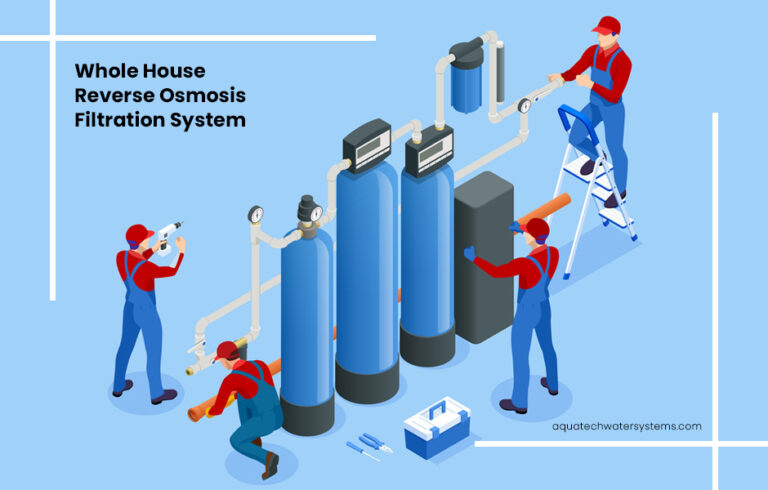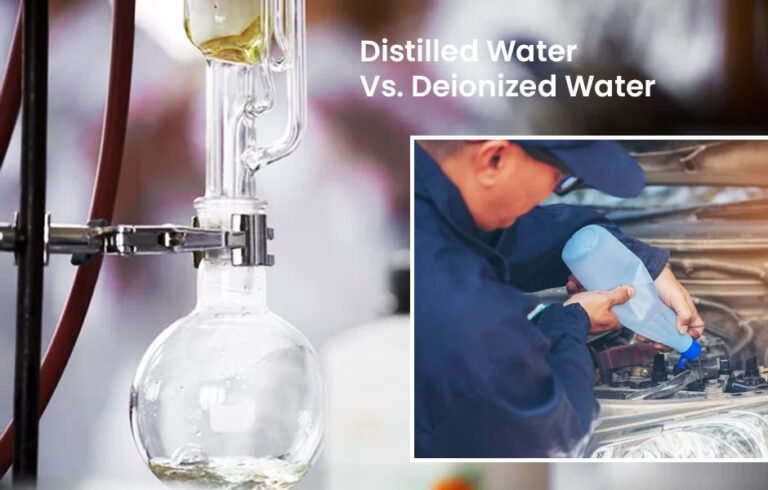Millions of people worldwide rely on reverse osmosis systems to purify their water. While reverse osmosis systems do an excellent job of removing contaminants and impurities, they can also strip the water of essential minerals like calcium and magnesium. This can be a problem, but remineralizing RO water is a great way to enhance its quality and benefit your health.
Besides adding back the essential minerals to your water, remineralizing can effectively improve the taste of the water. RO water can often have a bland or slightly metallic taste, but remineralizing it can enhance its flavor. Additionally, remineralized RO water has a higher pH level and is more alkaline than regular tap water. This makes it a better choice for people looking for an alkaline diet or who want to reduce their acid intake.
No two people are alike. We all have different tastes, preferences, and habits. The same is true for water. The type of remineralized RO water you like depends on your personal taste. In this article, we will discuss the process of remineralization and the benefits of mineral-rich water, why you should consider remineralizing RO water, several methods to remineralize RO water, and some commonly asked questions.
What is RO water?
RO water is water that has been purified with a reverse osmosis system. This type of water is free of contaminants and minerals, so it is often recommended for people with sensitive stomachs or allergies.
RO water is generally made by passing water through a semipermeable membrane. This membrane allows pure water to pass through while blocking contaminants and other larger molecules that are be harmful to your health.
Does reverse osmosis remove minerals?
Yes, RO water does remove certain essential minerals. After undergoing the reverse osmosis process, the water becomes free of all foreign particles, ions, and contaminants, including some of the minerals essential to the human body.
RO water is demineralized to varying degrees, depending on the type of reverse osmosis system used. Remineralizing at this stage helps to add back in all of the essential minerals that were removed by RO water.
What minerals are removed during RO process?
While reverse osmosis systems does an excellent job of removing contaminants and impurities from the water, they can also strip the water of essential minerals like zinc, copper, iodine, calcium, phosphorus, magnesium, and fluoride.
Impurities removed during reverse osmosis include chemicals, manganese, iron, lead, and metal ions, aqueous salts, including sodium, chromium, and arsenic.
What is RO remineralization?
Certain minerals are filtered out during the reverse osmosis filtration process, leaving it devoid of calcium, magnesium, potassium, and other essential nutrients. You can restore those nutrients into your drinking or cooking water with remineralization.
RO remineralization is a process that adds essential minerals back into water that has been purified with a RO system.
Reverse osmosis remineralization can improve the taste of the water, make it more alkaline and provide other health benefits. RO remineralizing filters can add back in all of the essential minerals that were removed by RO water, while others only add a few.
Should you remineralize RO water?
There is no one-size-fits-all answer to whether or not you should remineralize RO water. For example, some people remineralize RO water to improve the taste of the water. Others remineralize RO water to make it more alkaline and healthy. And still, others remineralize RO water to add essential minerals. However, the main reason to remineralize RO water is to add back in the vital minerals removed by reverse osmosis.
There are pros and cons to remineralizing RO water. On the one hand, remineralizing RO water can improve its quality and benefit your health. But on the other hand, remineralizing RO water using cheaper alternatives and a method not aligned with your purposes can also add unwanted pollutants and contaminants to the water. So, it is essential to weigh the pros and cons before deciding whether or not to remineralize your RO water.
Best way to remineralize RO water
There are a few different ways as to how to remineralize RO water. One way is to use a remineralizing filter. This filter is specifically designed to add essential minerals back into RO water.
Let us look at some of them:
Adding mineral drops
One of the most popular and less time-consuming ways to remineralize RO water is to add mineral drops to your RO water for drinking. These drops typically contain a blend of essential minerals like magnesium, calcium, and potassium.
Remineralizing water filter
A remineralizing filter is a device attached to your faucet and adds back in all of the essential minerals removed by reverse osmosis. This type of filter is designed to add essential minerals, including calcium and magnesium, back into RO water. This enables you to drink water that is free of all harmful pollutants but contains all the essential minerals your body needs. It is important to read the specs on any remineralizing filter before purchasing one, as some only add a few minerals back into the water.
Alkaline pitcher
An alkaline pitcher is a device that is designed to make your RO water more alkaline. It does this by adding back essential minerals like calcium and magnesium. These minerals help balance the water’s pH level and make it more alkaline.
To remineralize RO water with an alkaline pitcher, simply add the recommended amount of drops to your pitcher and fill it up with RO water. Let the mixture sit for about 30 minutes, and then enjoy your remineralized RO water.
Alkaline cartridge
An alkaline cartridge is a device that is typically attached to your filtration system to add back the minerals that is stripped off during the filtration process. It is also used to increase the pH level of your water.
By remineralizing RO water and making your water alkaline, these cartridges can aid digestion, weight loss, increase high shear blood viscosity, detoxify your body, reduce acidity in the body, and treat gastrointestinal tract disorders.
So if you are looking for a way to remineralize your RO water and make it more alkaline, an alkaline cartridge fitted to your existing RO system is a great option.
How to remineralize RO water naturally?
Remineralizing RO water with salt is a great way to add back in some of the essential minerals removed by reverse osmosis. To remineralize RO water with salt, you will need a pot, RO water, and sea salt. First, pour the RO water into the pot. Then, add enough sea salt so that it dissolves in the water. And finally, simmer the mixture for about 30 minutes. This will remineralize your RO water and restore its lost minerals! Add natural salt such as Himalayan salt.
Benefits of adding minerals to RO water
The water you want to drink and cook with should contain all the necessary minerals that your body needs to function effectively. The reverse osmosis process was invented to remove all impurities that regular water contains. However, a downside to this is that it also ends up removing the required minerals. To avoid consuming water devoid of these important minerals, scientists came up with the process of remineralization.
There are many benefits of remineralizing RO water. Some of the benefits include improved taste and improved quality. The main benefits for health include better hydration, improved absorption of nutrients, healthy digestion, remineralizing of teeth and bones, and a stronger immune system.
Why are minerals important for staying healthy?
Minerals are essential for staying healthy. They are responsible for a wide variety of functions in the body, including nerve and muscle function, blood clotting, and energy production. Additionally, minerals play a role in keeping the body alkaline. When the body is too acidic, it can lead to various health problems.
By remineralizing RO water, you can help restore the body’s pH balance and improve your health. Unfortunately, unhealthy and fat-laden food items typically contain few nutrients and minerals.
Even are daily diet mainly includes processed foods that lose their nutrients over time through processing, such as refining grains or pureeing vegetables. Because of this nutrient-poor diet, you need to make sure these nutrients and minerals at least enter the body through the water you drink. Remineralized RO water is your best bet in such a situation.
FAQs
Is it safe to remineralize RO water?
The answer is yes. Remineralizing reverse osmosis water is safe and very healthy for your body as it is laden with all the essential minerals and nutrients that the human body requires to function properly.
Is there a significant change in the taste of RO water?
There can be a significant change in the taste of remineralized RO water, especially if you add back in minerals like calcium and magnesium. Some people find that remineralized RO water tastes better than regular tap water. In contrast, others find that it has a slightly metallic taste. It depends on what minerals you add back in and how much you remineralize the water.
Can we use remineralized RO water for planted tank?
Remineralized RO water is suitable for your planted tanks as your green friends get water that is free of pollutants and harmful chemicals. The minerals present in remineralized RO water also help the plants to grow healthily.
Why do people suggest remineralized RO water for coffee?
If this question has come to your mind, I am sure you tend to take coffee multiple times a day. When you can increase the intake of essential minerals by brewing your coffee with remineralized RO water, why would you not? Of course, it is a personal preference, but adding remineralized RO water to your coffee helps you stay healthy.
Conclusion:
Remineralizing RO water is a great way to improve your water quality and benefit your health. By restoring some of the essential minerals removed by reverse osmosis, you can ensure that your body is getting the minerals it needs to function effectively.




